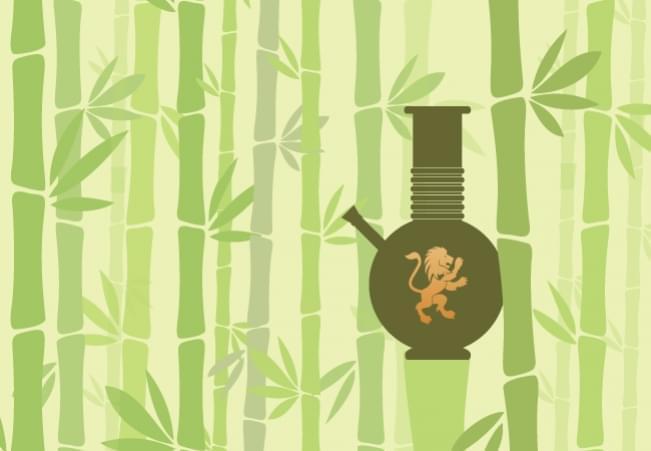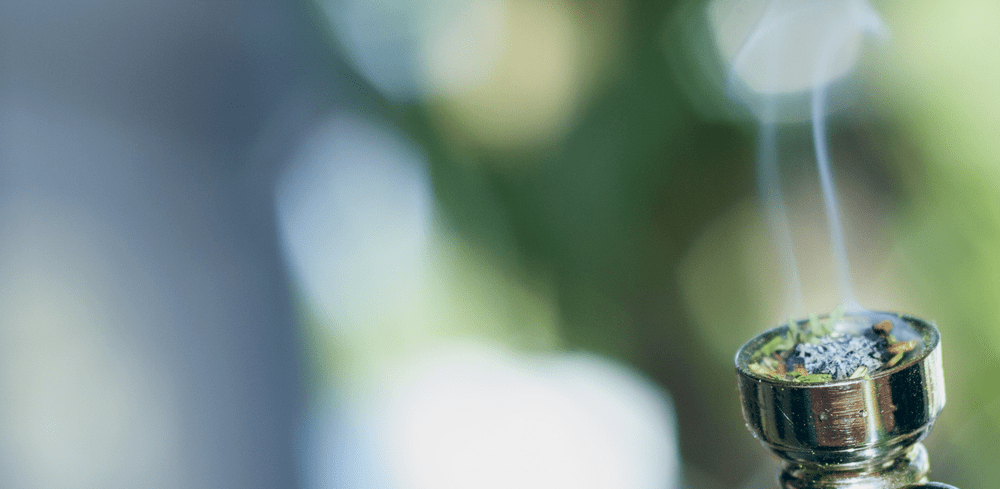.

Smoke Your Weed In A Homemade Bamboo Bong
In this article, we bring you the know-how of building a homemade bamboo bong of premium quality that will rival any bought one and remain budget friendly.
If you have ever crafted something yourself, you know the joy that comes from using it. It is never quite the same if you bought the object. Now imagine yourself smoking some of that prime homegrown bud you usually enjoy, but out of a homemade bong. Now that is something.
In this tutorial, we will show you how to build a perfect bamboo bong. It will be a weekend project with some dedication required, but the end product will surely be well worth the trouble.
The bamboo bong is a safe and eco-friendly project and still one of the easiest do it yourself bongs. Get ready to impress yourself and everyone else, just by looking at your unique bong.
The bamboo bong isn’t just for show as it’s durability can easily outmatch even the thickest of glass pieces, making the bamboo bong ideal for outdoor use. The only downside is the cleanability factor, but in this tutorial, we shall make the bong in such a way that it is still quite easy to maintain.
BUILDING THE BONG
MATERIALS
First, we start with gathering the materials required for the build. The bong we will be making won't have a bamboo downstem and bowl - we don’t feel comfortable with anything else than glass being exposed to high heat. If you want to make your downstem out of bamboo, you will need a thin piece of bamboo to which you attach your bowl. It shouldn’t be too hard to make but we don’t recommend it, as how bamboo may react to being exposed to heat over and over again is unknown, and it will quite certainly be hard to clean.
A piece of cured and aged black bamboo will be best suited for our purpose, and it can be bought quite cheaply. The size is for you to choose. Any bamboo can be used, but we find black bamboo most aesthetically pleasing. Regardless of the species of bamboo, you decide to use, it should be cured and aged before making the bong, as such bamboo is stiffer and stronger, and quite importantly, easier to cut and drill into.
You will also need to purchase a glass downstem and bowl with a slider, as we won’t be making a carb hole. The carb hole itself isn’t hard to make, but we find that hitting a bong with a slider is a much cleaner experience with the smoke being less harsh and with less chance of messing up your surroundings with accidental bong spills.
The interior of the bong will be coated with beeswax. We prefer to keep it as natural as we can, but other coatings can also be used.
The seal for the downstem is made out of Sugru. A moldable glue that turns into rubber. It will allow us to remove the downstem as we wish and it is also food safe - a thing we thought important in our choice of the seal. As with the coating, you can also choose your sealing agent at will.
TOOLS
- A drill (a small drill for pilot holes and a larger spade drill for downstem hole and breaking through bamboo nodes.)
- Wood saw
- Painter’s tape
- A vice grip
- Rough grit sandpaper
CUTTING THE BAMBOO
The size of your bong is completely for you to choose, but the chances are that the bamboo you got is too big. There are several things to consider when cutting your bamboo. You surely noticed your bamboo has nodes. The nodes are both useful and a nuisance.
The water container of your bong needs to have a node there as the node is waterproof and has an internal plate that can hold your bong water. The base of your bong should, therefore, be close to the node. Deciding how close to the node you cut is a matter of personal preference and aesthetic appeal. We eyeballed our base some three fingers below the last node.
When cutting the base, two things are of most importance: putting painter’s tape on the place you want to cut before cutting it as it will prevent unwanted splinters and preserve the looks of your bong, and cutting the base straight as the bong rests on it and you want it to be stable. If you cut it a bit crooked, you can always try using sandpaper or cut again to repair it. The cutting is to be done with a wood saw.
Any sawing of the bamboo should be aided by first applying painter’s tape. You want that bong to look as good as possible.
DRILLING THE EXCESS NODE PLATES
Other than the plate in the base node, which is used to hold the water, all other node plates are just a nuisance and need to be drilled through. Using a long spade drill will work very well with the nodes. When making node holes, it is impossible to use painter’s tape, and you shouldn’t worry yourself about it. Just take care when drilling out the excess plates – you don’t want to damage the walls of the bong.

DRILLING THE DOWNSTEM HOLE
When choosing the spot for your downstem hole, it is best to have already acquired the downstem, as the size of the hole and the placing will heavily rely on it. Before drilling anything, or marking it for drilling, place your stem over the bamboo bong and position it as you would like it to be in the final product. Now you have an idea where the downstem hole should be. We positioned ours, so the down stem ends some three fingers above the bottom sealed node.
After we had chosen the spot, we put painter’s tape over the area, checked the spot once more, and marked it with a marker on the tape.
The size of the hole was just a tiny bit larger than the size of our downstem.
Now the downstem position is chosen, it is time to secure the bamboo for drilling. You need to place your bamboo inside the vice grip. Before putting it into the vice, we wrapped our bamboo in a towel, so it didn't get damaged. Also, and we can’t stress this enough, be very gentle with your vice. You don’t want to hear the bamboo cracking – it is just to hold it secure while drilling.
IMPORTANT: When making the hole, it is very important to angle the hole diagonally down towards the bottom of the future bamboo bong as it will help you place your stem correctly.
The marked spot is first drilled through by a drill to make a small pilot hole. The pilot hole is then enlarged with a spade drill. Remember, drill diagonally down towards the water chamber.
SANDING AND CLEANING THE BONG
We are nearing the completion of our bong. This step is very important as it will add quality to your bong and ensure a good smoking experience. It shouldn’t be skipped in any scenario. All the holes we drilled should be sanded using a grit sanding paper. That includes node holes and the stem hole. The mouth of the bong can also be sanded for a nicer smoking experience. When sanding the inner nodes, a long piece of slim wood, a strong metal wire, or a pen can be used to wrap the sanding paper around it and ease up the sanding process
After sanding everything, there will be a lot of residue inside your bong. It is important to clean it very thoroughly. We recommend using a strong compressor to blow the particles out. Afterwards, the bong can be cleaned with water and left to dry out. This process can and should be repeated until you feel the bong is completely cleaned of particles.
COATING THE BONG
Another important step that we don’t recommend you to skip is coating the insides of the bong. The process ensures no bamboo particles will contaminate your smoke thus guaranteeing a pleasurable and safe smoking experience. It also makes cleaning of your bong a lot easier and extends its lifespan considerably. We used beeswax for to keep things natural. Go Mother Nature.
Heat up your beeswax and pour it inside the bong. Be very careful with this step as you can easily get burned by the wax leaking out of the hole of the bong. This step is best done outdoors as we guarantee, you will make a mess. When the beeswax is poured inside be sure to roll and move the bong, so the wax coats the entire surface of it. Use some small disposable wood pieces to coat the fine edges if they aren’t coated by simply pouring the wax. The excess wax is to be poured out. If the mouthpiece contains some unwanted wax, you can scrape it off using a spoon. After waxing the bong leave it to cool down and settle for a few hours.
SEALING THE DOWNSTEM
To seal the downstem hole, you can use any sealant available, although we strongly recommend using a food safe sealant as the downstem can get hot, and you don’t want any toxic vapors. We made a seal, so the down stem is removable. We used the Sugru glue, which upon drying turn into rubber. We shaped it around the hole and upward, so the downstem fits snugly and comfortably in it, allowing it to be removed but still making sure it is stable. In the process of shaping, we eyeballed the shape and didn’t use the downstem, so we don’t get it glued and dirty. After you are satisfied with your shape, leave it to dry for at least 12 hours.
ADD YOUR DOWNSTEM
This last step is just about adding the downstem and the bowl. Actually, it is so obvious it shouldn’t even be a step.
What this step is about is calling a few friends and testing your awesome new bamboo bong. Hit it, and may the high be with you!

































